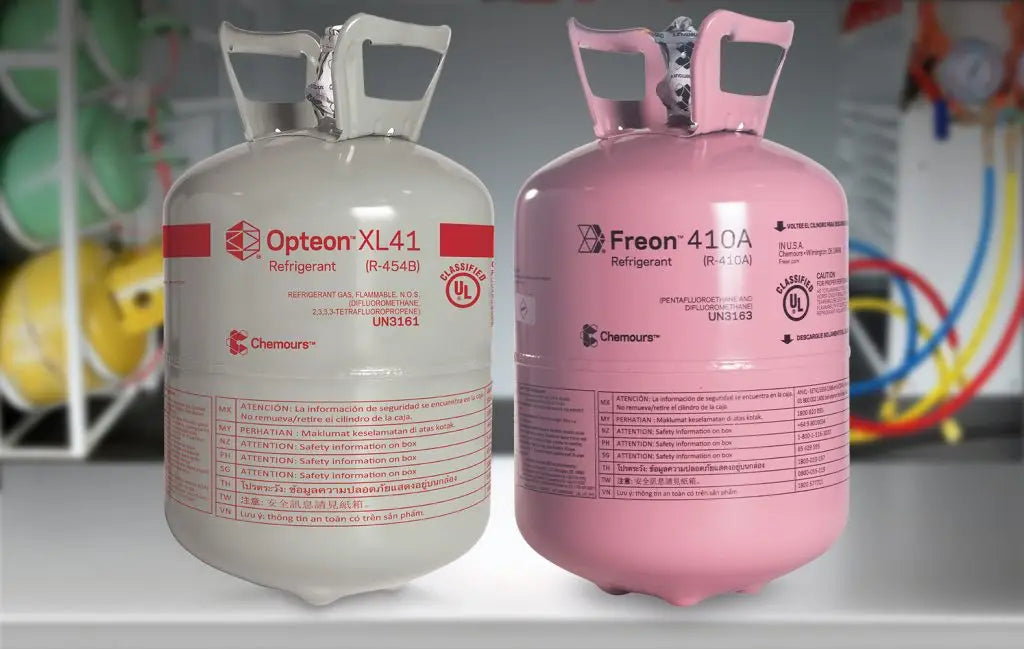As energy regulations evolve and environmental awareness increases, HVAC manufacturers and homeowners alike are turning toward A2L refrigerants. These refrigerants represent the next step in reducing greenhouse gas emissions without sacrificing cooling performance. But what exactly is an A2L refrigerant—and what does it mean for you as a homeowner?
This guide explains what A2L refrigerants are, how they compare to traditional refrigerants like R-410A, and why making the switch is important in 2025 and beyond.
❄️ What Are A2L Refrigerants?
A2L refrigerants are a new class of low-global-warming-potential (GWP) refrigerants defined by their safety and chemical characteristics:
-
A = Low toxicity
-
2L = Mildly flammable (low burning velocity)
They are designed to replace high-GWP refrigerants like R-410A while maintaining similar system performance. Popular A2Ls include R-32 and R-454B.
📘 See the EPA’s refrigerant classification guide for technical standards.
🌍 Why A2Ls Are Becoming the Standard
1. Lower Global Warming Potential
A2Ls have significantly lower GWP values compared to legacy HFCs:
| Refrigerant | GWP | Flammability Class | Type |
|---|---|---|---|
| R-410A | 2,088 | A1 (non-flammable) | Blend |
| R-32 | 675 | A2L | Single |
| R-454B | 466 | A2L | Blend |
🏆 A2Ls reduce GWP by up to 80%, aligning with global climate goals.
2. Compliance with New U.S. Regulations
In 2023, the U.S. Department of Energy (DOE) and Environmental Protection Agency (EPA) began phasing out high-GWP refrigerants. By 2025, most new residential HVAC systems are required to use A2L refrigerants.
📘 DOE HVAC efficiency and refrigerant regulations
🏡 What Homeowners Need to Know
Installation and Safety
While A2Ls are mildly flammable, their risk is minimal when installed properly by trained technicians. Safety measures include:
-
Leak detection sensors
-
Proper airflow ventilation
-
Certified service tools (e.g., A2L-rated gauges)
Most HVAC installers have now received A2L certification training through manufacturer and EPA programs.
Maintenance and Servicing
-
A2Ls like R-32 are single-component, making them easier to top off and recycle.
-
Blended A2Ls like R-454B may require more specialized handling.
🔄 R-32 vs. R-454B: Which A2L Is Better?
| Feature | R-32 | R-454B |
|---|---|---|
| GWP | 675 | 466 |
| Component Type | Single substance | Blend |
| Efficiency | High | Moderate |
| Service Simplicity | Easier (reusable) | Requires precision |
| Market Adoption | Widely adopted globally | U.S. adoption growing |
🏆 R-32 stands out for most residential applications due to its performance and simplicity.
🔧 Are A2L Systems Compatible with Older AC Units?
Unfortunately, no. A2L refrigerants cannot be retrofitted into R-410A systems. The components, pressure profiles, and safety requirements are different. You will need:
-
A new condenser and air handler rated for A2L
-
Refrigerant lines cleaned or replaced
-
Certified technician installation
📊 Are A2L Systems More Expensive?
In the short term, yes. Homeowners may see:
-
$500–$1,200 higher install costs
-
Additional costs for sensors and compliant parts
However, these are offset by:
-
Lower refrigerant charges
-
Reduced energy bills due to better performance
-
Future-proof compliance with refrigerant laws
✅ Final Takeaway: Prepare for the A2L Future
A2L refrigerants represent a smart shift toward sustainability, safety, and system longevity. If you’re planning an HVAC upgrade, choosing an A2L-ready system—like those using R-32—ensures your investment is aligned with the latest efficiency and environmental standards.
Explore compatible models like the Goodman 3 Ton R-32 Bundle and verify product certification in the AHRI Directory.







